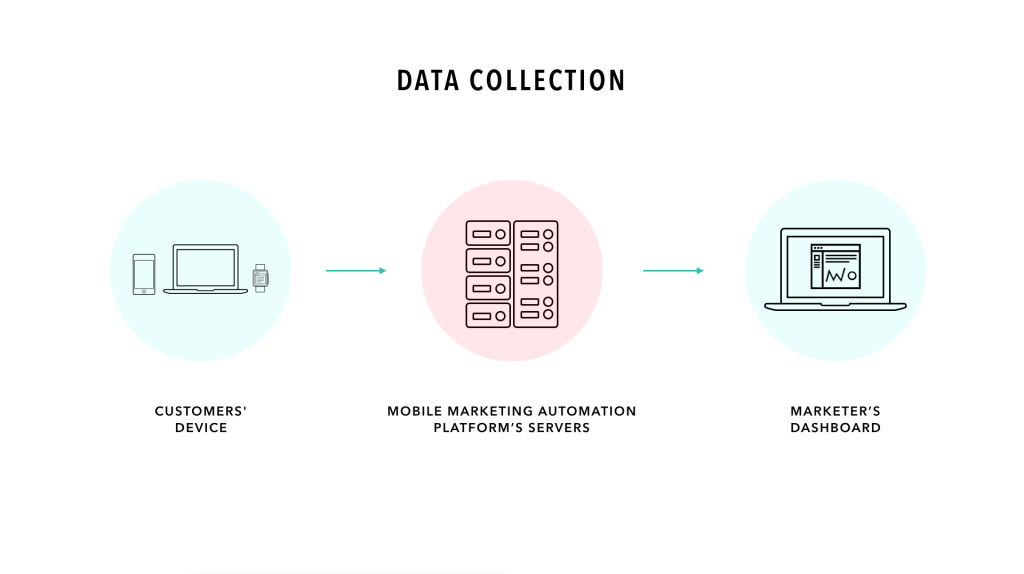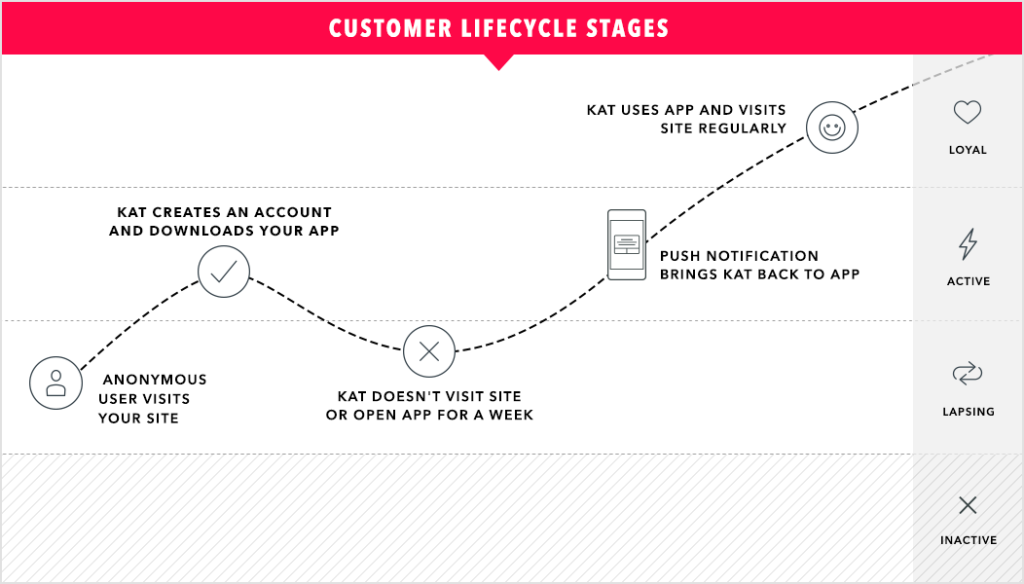Relationship Marketing Is the Future of Marketing
Published on April 05, 2016/Last edited on April 05, 2016/6 min read


Team Braze
Acquiring new customers is hard work. It’s expensive. And a really large percentage of these customers will probably leave you again soon anyway. That’s a lot of lost effort, and probably a lot of wasted money, too.
People are hard to convince. They stick to what they know. And they’re difficult to impress.
But all these facts can stack up in your favor if you’re reaching and engaging your customers through a relationship marketing strategy.
At Appboy, we’ve had years of experience helping our clients with their mobile marketing efforts, and we’ve seen what relationship marketing in the mobile age can accomplish: stronger retention, higher conversion rates, and more. Our own proprietary research has found that there’s an over 60% uplift in retention for people who engage weekly with an app for the first month after it’s downloaded.
What is relationship marketing?
Relationship marketing isn’t a new term, but it’s taking on new meaning in the mobile age.
Back in 1994, Robert M. Morgan defined it in the American Marketing Association’s Journal of Marketing as “establishing, developing, and maintaining successful relational exchanges” between customers and brands. The idea of strategically nurturing long-term relationships with customers also appears in a 1988 article in Business Horizons by University of Southern California professor Robert E. Spekman, and while that piece discusses manufacturing suppliers and their buyers, long-term relationships have only become more applicable to more industries in the mobile age.
Journals and articles aside, the truth is that relating to customers is an idea even older than the marketing profession. Think of pre-industrial shopkeepers nurturing their personal relationships with their patrons. Making people feel valued as a way of furthering a business is just… good business.
So the key points are, to steal a couple words from Morgan, maintaining and exchanging. A relationship is give-and-get, not get-and-get, which means brands focused on developing relationships with their customers must focus on building a two-way rapport that lasts.
That means pursuing the long-term goal of an ongoing relationship with a customer, instead of focusing marketing efforts on just the short-term goal of getting people to, say, download an app or make a purchase.
Exchange within the customer relationship
Establishing a relationship requires establishing a dialog. It means listening to what your current and potential customers are saying; what they want, when they want it, and how they want you to provide it.
Before the rise of mobile devices, brands only had a few ways of doing that. They could let their customers talk to them via a customer service call center. They could employ the tried and (sometimes questionably) true focus group.
Digital and mobile channels have made collecting feedback possible in a whole host of new ways, like review and feedback forms within apps. But there’s more. Mobile marketing makes possible the collection of any number of data points, and these can all be used to “listen” to customers. The time of day a customer usually make a purchase, the types of articles they’re most interested in reading, whether they live in a big city or in the suburbs… anything you can track can become part of your picture of your customers, and a part of your dialog with them.

That’s all pretty awesome, but in the end it’s just inert data… until you respond to what you’ve learned by using it to inform your outreach and brand experience. And the world of mobile marketing automation platforms makes applying learnings—responding to your customers and continuing the two-way dialog—possible at unprecedentedly granular and scalable levels.
What does that look like? Well, among other use cases, it makes it possible for your brand to:
- Automate your campaigns to deliver when each customer is most likely to engage with your message
- Create a segment of customers who regularly read your brand’s new home decor content, and send them a message alerting them to your newest patio decor piece
- Inform your customers that food deliveries might be a little delayed due to the traffic leaving the local stadium
- Direct users to your preference center that allows them to decide which types of messages they want to receive from you (and how often), with a message in your onboarding campaign
Understanding your customers’ behavior, and letting that knowledge set the cadence of your outreach, is an incredibly powerful way of personalizing your campaigns.
While you’re on a mission to develop a long term relationship, and not just push for one transaction, you can reference what you already know about your customer and use your outreach to build on that relationship. Mark Ghermezian, Appboy co-founder and CEO, advises marketers that “messaging should feel less like a call to action, and more like the start of a conversation.”
It’s the long game, and it’s about building trust. Like business relationship advisor Tamara McCleary says, “If people trust you, they’re going to give you their business.”
Maintaining the customer relationship
Of course, one amazingly personalized marketing message is probably not going to be enough to keep a customer coming back for years. A continued relationship requires continued interaction.
As customers engage in more and more interactions with your brand, they’ll move through different stages of a customer journey, or lifecycle. At Appboy, we’ve found that when you’re looking to understand how customers are engaging with your brand, it makes sense to think of them in terms of four lifecycle stages:
- Loyal
- Active
- Lapsing
- Inactive

The outreach customers get from brands, then, can be tailored to their current stage. It makes no sense to send a loyal user a winback campaign, and a lapsing user isn’t likely to care about a new, very advanced feature on your app. Instead, thank your loyal users for being great customers by letting them know about rewards programs or incentives that will encourage them to keep engaging. And many lapsing users can be convinced to give you another chance if you remind them of your brand’s value proposition at an opportune time (think: a taxi app sending a push notification to their lapsing users during a subway shutdown).
By reaching out in a continuous and continuously useful way, your brand can earn customer loyalty, driving stronger engagement and higher conversions over the long term.
Why mobile marketing needs relationship marketing
Marketers can use today’s marketing automation platforms to turn massive amounts of data into effective campaign strategies. But like any tool, there are better ways and worse ways to use it. Successful relationship marketing done through automation platforms is personal, not creepy, and valuable, not inane.
Successful relationship marketing is personal, not creepy, and valuable, not inane.
Once customers feel valued, have been impressed, or had a “wow” moment (“They know exactly what I wanted!” “That was so easy!”) they’ll start making your brand a habit. And once habits are formed, you’ve got a relationship that you can continue to nurture for years to come.
It’s like being that local shopkeeper, only with tons of customers all over the world, with a store that never closes. That’s what customers today expect of their favorite brands, and brands who focus on building these long-term relationships will see results.
Releated Content
View the Blog
The new inbox reality: How iOS changes are reshaping email marketing

Aparna Prasad

Experience optimization: Turning data insights into better journeys

Team Braze

December 2025 Bonfire Marketer of the Month: Jagex’s Emma Oliver
